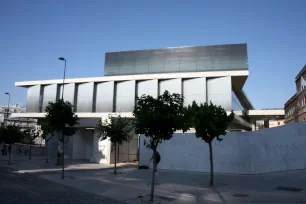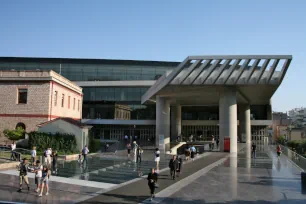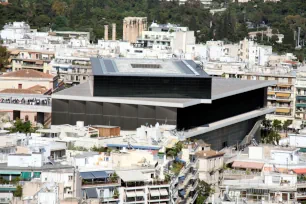The Acropolis Museum is housed in a modern building set at the foot of the Acropolis. Many of the sculptures and reliefs that were found on the Acropolis are displayed here.
The Old Museum
Until July 2007, the many amazing sculptures were displayed in a small, old building on the top of the Acropolis, behind the Parthenon. The building, which opened in 1878, had become too small to accommodate both the sculptures and the thousands of visitors who wanted to see them. The museum was also criticized for not being earthquake-resistant in an earthquake-prone area.
The New Acropolis Museum
The new Acropolis Museum opened in June 2009 in a spectacular modern structure designed by the Swiss architect Bernard Tschumi. It is built on a series of pillars to protect the archaeological site of an old quarter that was discovered below the surface. A glass floor allows people to look at the excavated remains of houses that have been uncovered. The museum has glass façades on all sides, allowing visitors to catch a glimpse of the Acropolis from inside the museum. There’s even an outdoor terrace on the third floor with a great view of the Acropolis Hill.
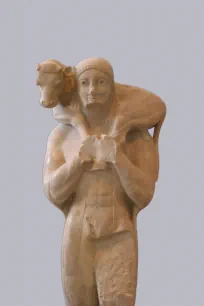
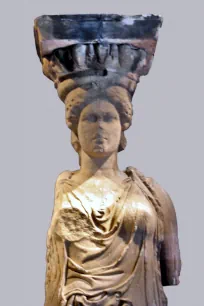
The Collection
The collection of the Acropolis Museum consists of sculptures that were found on the Acropolis. Visitors start walking on a wide ramp, which symbolizes the ascension of the Acropolis Hill. On the sides of the ramp are objects that were used in daily life and sculptures found at the foot of the sacred hill.
The first gallery shows a large number of Archaic statues, both Korai (female) and Kourai (male) statues from the fifth and sixth century BC. The museum’s most famous Archaic sculpture is the Moschophoros (calfbearer), sculpted in 570 BC and representing a man named Rombos who plans to sacrifice a calf. At the center of the gallery is the Boy of Kritios, a statue that symbolizes the transition from Archaic art to Classical art. Also, not to miss is a beautiful relief of a young, mourning goddess Athena.
The gallery on the next floor exhibits the sculptures and reliefs from the Parthenon. Reliefs of the frieze of the Parthenon – which had a length of 160 meters (525 ft) – are among those displayed here. Some six hundred figures were depicted on the frieze, which shows a procession during the Panathenaic festival, held every four years in honor of the goddess Athena. The reliefs are displayed in the order as they appeared on the Parthenon.
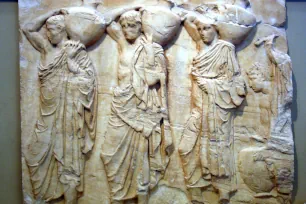
There are also many metopes (relief sculptures on the outside of the temple) on display, as well as some sections of the pediment.
The last gallery shows sections of the Propylaea, the temple of Athena Nike, and the Erechtheion, including the famous caryatid sculptures, female figures that supported the south porch of the Erechtheion temple.
Elgin Marbles
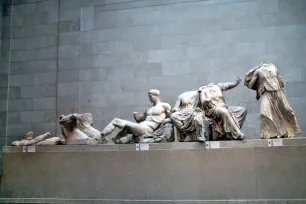
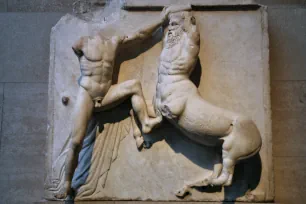
The majority of the original Parthenon sculptures are in the British Museum in London, where they are known as the Elgin Marbles.
In 1799 Lord Elgin, British ambassador to the Ottoman Empire, obtained permission from the Ottoman rulers to take about two thirds of the sculptures of the Parthenon to the United Kingdom. In 1816 the sculptures were sold to the British government and displayed in the British Museum, where they are still to this day.
The Greek government considers the transaction invalid and has demanded the sculptures to be returned to Athens. The new Acropolis Museum was built in part to demonstrate that Greece is capable of providing a safe and proper accommodation for the invaluable sculpture collection.


